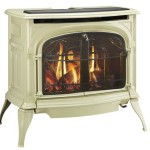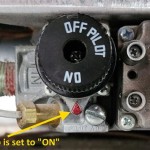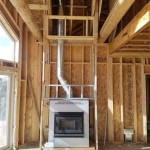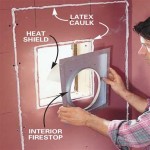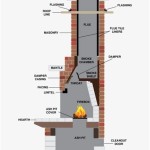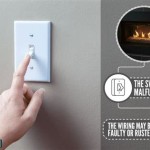Fireplace Blower Systems: Enhancing Your Fireplace Experience
A fireplace blower system is an essential component for maximizing the efficiency and comfort of your fireplace. These systems utilize fans to circulate warm air from the fireplace into the room, effectively distributing heat throughout the space. By increasing air circulation, fireplace blower systems can significantly improve the heating capacity of your fireplace, making it a more efficient and enjoyable source of warmth during cold months.
Benefits of a Fireplace Blower System
Fireplace blower systems offer a wide range of benefits, making them a worthwhile investment for homeowners who want to enhance their fireplace experience. Here are some key advantages:
Increased Heat Distribution
One of the primary advantages of a fireplace blower system is its ability to distribute heat more effectively throughout the room. Without a blower, warm air tends to rise and accumulate near the ceiling, leaving the lower portion of the room relatively cold. A blower system addresses this issue by circulating warm air throughout the space, ensuring a more consistent and comfortable temperature.
Enhanced Efficiency
Fireplace blower systems can significantly improve the efficiency of your fireplace. By circulating warm air, they help to maximize heat transfer from the firebox to the surrounding area. This reduced heat loss translates to lower energy consumption and increased overall efficiency.
Improved Comfort
Fireplace blower systems increase comfort by ensuring even heat distribution throughout the room. Instead of experiencing hot spots near the fireplace and cold areas in other parts of the room, a blower system creates a more pleasant and consistent temperature, improving the overall comfort level.
Types of Fireplace Blower Systems
Fireplace blower systems come in various types, each designed for specific applications and requirements. The most common types include:
Built-in Blowers
Built-in blowers are integrated directly into the fireplace unit during the manufacturing process. These blowers are typically powered by the fireplace's existing power source and offer a seamless and aesthetically pleasing solution.
Retrofit Blowers
Retrofit blowers are designed to be installed on existing fireplaces that do not have built-in blowers. These systems are typically mounted on the fireplace hearth or near the firebox and provide a simple and effective way to add blower functionality to an existing fireplace.
Choosing the Right Fireplace Blower System
Choosing the appropriate fireplace blower system depends on several factors, including:
Fireplace Type
Different fireplace types have different airflow requirements and may require specific blower systems. For example, a gas fireplace may require a blower system with a higher airflow capacity compared to a wood-burning fireplace.
Room Size
The size of the room to be heated is a crucial factor in determining the appropriate blower capacity. A larger room will require a more powerful blower system to effectively distribute heat throughout the space.
Budget
Fireplace blower systems range in price depending on features, brand, and installation complexity. It's essential to set a budget and consider the return on investment before making a purchase.
Installation Considerations
Installing a fireplace blower system requires careful planning and professional expertise. Here are some key considerations:
Venting
Adequate venting is essential to ensure proper airflow and prevent the build-up of harmful gases. Proper venting will also help to maintain the efficiency and safety of the blower system.
Power Source
Ensure that the blower system has access to a reliable power source, such as a dedicated electrical outlet or a fireplace-specific power supply.
Professional Installation
It's highly recommended to seek professional installation services for fireplace blower systems. Certified technicians can ensure proper installation and wiring, guaranteeing safety and optimal performance.
Maintenance and Care
Proper maintenance is crucial for ensuring the longevity and efficiency of your fireplace blower system. Follow these recommendations for maintaining your system:
Regular Cleaning
Regular cleaning of the blower components, including the fan blades, housing, and air intake, is essential to remove dust and debris that can affect performance.
Inspecting and Replacing Filters
Some fireplace blower systems have filters to prevent dust and debris from entering the blower motor. Regularly inspect and replace filters as necessary.
Lubricating Moving Parts
Lubricating the blower motor and other moving parts can help to reduce friction and prevent wear and tear.
Conclusion
Fireplace blower systems are a valuable investment that can significantly enhance the efficiency, comfort, and overall experience of your fireplace. By understanding their benefits, types, installation considerations, and maintenance requirements, you can make an informed decision about whether a fireplace blower system is right for your home. With proper selection, installation, and care, a fireplace blower system can provide years of enjoyment and warmth.

Fireplace Efficiency Blowers And Why You Should Have One

Why Should I Get A Fireplace Blower For My Masonry

How Does A Fireplace Blower Work Learn About Blowers

How Chimney Fans Work The Blog At Fireplacemall

Installing A Fireplace Blower Gfk4 Gfk4a In Heatilator Natural Gas

Fireplace Blower Fans What You Need For Heat Full Service Chimney

Kam Fireplace Fan Efficient Heating Control For Your Home Blog Ventilation Systems Vents

Fireplace Blowers Explained How Fans Work Regency

Fireplace Blower Fans What You Need For Heat Full Service Chimney

Blower Vs No Can I Add A To My Gas Fireplace
Related Posts


